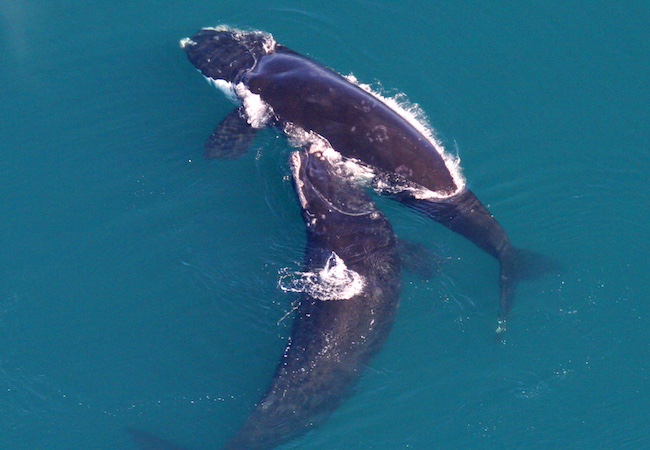Nearly all female North Atlantic right whales have become entangled in fishing gear at least once, and this leads to far lower likelihood of breeding, a new analysis led by Macquarie University has shown.
New findings show the severe impact of fishing gear entanglements on the survival of critically endangered North Atlantic right whales, with every injury from entanglements impacting population recovery.

The study, led by Macquarie University marine science doctoral candidate Joshua Reed in collaboration with scientists at Ursinus College and Griffith University, was published in Proceedings B of the Royal Society on Wednesday 13 March 2024.
Modelling of whale-sightings data shows when female right whales get tangled in ropes from lobster and crab pots, they are less likely to calve, potentially leading to extinction for this species.
With only 360 North Atlantic right whales still alive, this is one of the world’s most endangered whale species, and its population has rapidly declined over the past decade.
“Poor calving is one of the main factors behind the decline of North Atlantic right whales and, until now, the reason for these whales’ failure to calve wasn’t clear,” says Mr Reed.
“This study makes it clear that all types of entanglement in fishing gear impact females’ ability to calve, helping address one of the big, outstanding questions for saving North Atlantic right whales.”
Known as 'the urban whale' because they live in the waters off the heavily populated east coast of the USA and Canada, these whales pass millions of fishing ropes and hundreds of ships and boats on their migration each year.
Whales entangled in fishing gear often survive, and their injuries are classified as 'minor, 'moderate' or 'severe.'
The researchers analysed 40 years of data on 199 female right whales together with known fishing-gear entanglements rated by severity, to calculate the impact of these encounters on whale reproduction.
“This study makes clear that using value-laden terms such as ‘minor’, ‘moderate’ and ‘severe’ to describe the relative severity of scars from entanglements is inappropriate,” says co-author Honorary Professor Rob Harcourt, from Macquarie University’s School of Natural Sciences.
“These terms lead to an unconscious assumption that ‘minor’ injuries aren’t important, when in fact they are.”
The research showed pre-breeding age female whales that survive entanglements classed as ‘minor’ were the least likely to transition to breeding, with individuals in this class being 47 per cent less likely to breed than those that were not entangled.
Co-author Assistant Professor Leslie New, a statistical ecologist from Ursinus College in Pennsylvania, USA, says the study’s methodology shows the power of these modelling tools to inform conservation.
“Applying a standard technique in a new way, to a well-studied species, allows us to come up with a better understanding of how human impacts – in this instance, fishing entanglements – affect these female whales’ survival and reproduction,” she says.
Co-author Dr Peter Corkeron from Griffith University says the research delivers the important message that all entanglements matter.
“Weak rope is a technology now used to try to reduce the severity of entanglements, but it doesn’t change whether whales will get entangled,” he says.
“This paper indicates rope technology won’t solve the problem of female right whales' poor calving. We need to get all rope out of the water, urgently, for this species to start to recover.”
The findings show management actions toward recovery of the North Atlantic right whale must address both lethal and sub-lethal impacts of entanglements, regardless of severity classification, Mr Reed adds.
‘Disentangling the influence of entanglement on recruitment in North Atlantic right whales’ was published in Proceedings of the Royal Society B: Biological Sciences on 13 March 2024.
Φ